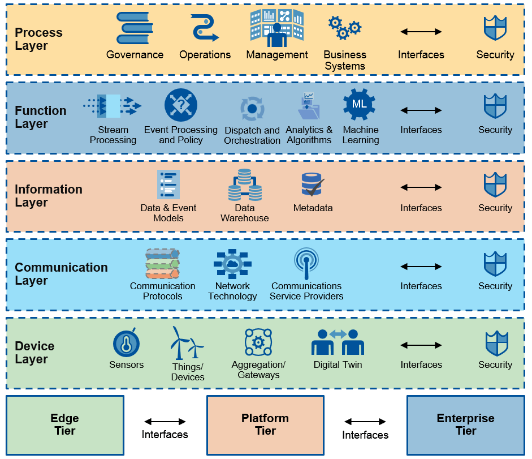Arrow & Microsoft: The New Product Lifecycle
Arrow & Microsoft: The New Product Lifecycle

Connected products are changing the business landscape and transforming entire industries. The ability to create integrated digital connections, from the edge all the way to the cloud is enabling new business models that capitalize on novel value-added services, and simultaneously open new modes for humans to interact with machines. While the promise and potential of digital connectivity is enormous, it requires skilled resources and new technology-based innovation for any organization to undergo a transformation.
The Challenge
For the typical business stakeholder, the business cycle is fraught with challenges. Commoditization due to hyper-competition and price pressures are the leading factors that impact hardware product profitability. In addition, increased expectations from customers for new features at marginal prices further strain traditional businesses. Concurrently new entrants threaten incumbents with disruptive innovations that can alter key competitive dimensions and increase the need for shortened time-to-market schedules.
The Solution
Connected product initiatives aim to overcome these challenges while modernizing product portfolios.
For effective impact, connected products need to be functionally interactive, self-aware and resilient. In addition, products need mechanisms for self-healing when problems occur. Connectivity should also enable data collection, pattern recognition, and ultimately predictive functions to foresee problems and facilitate preventive actions. Such a product concept requires product designers and technology architects to envision products as a series of layers.
The figure below lays out a reference architecture that fulfills the aspirations of a typical connected product. Implementation of such architecture requires domain-wide expertise and experience. Many customer projects fail due to the lack of these two crucial elements. Arrow and its portfolio of eco-system partners recognize these challenges and have conceived a solution portfolio to help organizations eliminate failure while developing connected products.

Figure 1: Multi-Tier Architecture of Connected Products (Source: Gartner)
Watch the on-demand webinar: The New Product Lifecycle – strategies for successfully building and managing a thriving connected product
Successful Connected Product Lifecycle
Before embarking on a full-fledge proof of concept effort to build connected products, it is crucial to consider the business outcomes desired from the initiative. For example, an electric utility might consider connected products as an enabler of a broad smart grid initiative. Similarly, an industrial machine builder may build connected products to improve the performance of specific assets on the factory floor. A healthcare provider might look at connected devices as a mechanism to increase patient health monitoring for preventive prescriptions.
Once business outcomes and the use cases are clearly defined, it is easier to evaluate technologies and ecosystems best suited for these outcomes. Equally important is an articulation of how the business envisions, the connected product will be used by stakeholders and customers. Use case definitions and scenarios are very effective at identifying the various feature-sets and functionalities that the product needs to fulfill. Once the business outcomes and use-cases are developed, the organization can make tradeoffs associated with building a minimum viable product.

Figure 2: Lifecycle of Connected Products Should Lead with Business Outcomes
Building the minimum viable product as a proof-of-concept is the next step and requires deciding on technology platforms and cloud interactions. Hardware decisions regarding the right components and systems that can facilitate rapid development occur in this phase. Getting access to the right expertise and solution ecosystem is paramount at this stage. Incorporating security across all levels of the product and throughout the product lifecycle is one of the most important aspects for consideration. If security is not thought through with enough expert help, the product will be vulnerable at later stages of deployment and can become a massive liability for the provider and customer.
Once the technology design, platform choice and security layers of the application are all solidified into an acceptable proof of concept, scaling the solution with robust production and deployment processes gains prominence. Approaches for cloud-based management and monitoring of connected products should be defined and developed. Zero-touch provisioning, data collection for analysis and remote optimization of field devices are important considerations at this stage.
A successful product lifecycle for connected products incorporates three fundamental aspects – device hardware lifecycle that involves silicon level choices, product lifecycle that involves software and firmware choices and a data lifecycle that focuses on managing the data collected from provisioning to optimization.
Arrow and Microsoft Partner to Offer Complete Lifecycle Services for Connected Products
Arrow Electronics and Microsoft have partnered to bring to market a comprehensive suite of solutions to accelerate the development of connected products. Businesses looking to increase the probability of the connected project success while ensuring robust scalability will benefit from this collaboration.
Benefits of the partnership for connected product developers include:
- Access to a rich partner eco-system that bridges the Operational Technology/Information Technology (OT/IT) divide
- Deploy scalable solutions across the globe
- Build proof-of-concept (POC) designs fast with fully integrated solutions and kits
- Create customized products easily with Arrow design and integration services
- Manage the entire product lifecycle from concept to end-of-life
For more information, contact Arrow Electronics at msembedded@arrow.com. Arrow also offers a one-hour free consultation on connected devices implementation.
Watch the on-demand webinar: The New Product Lifecycle – Strategies for successfully building and managing a thriving connected product
The post Arrow & Microsoft: The New Product Lifecycle appeared first on ReadWrite.
(79)


